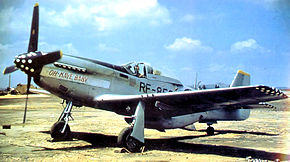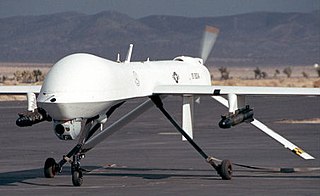| 543d Intelligence, Surveillance and Reconnaissance Group | |
|---|---|
| Active | 1942–1945; 1950–1951; 1997–present |
| Country | |
| Branch | |
| Role | Intelligence |
| Size | Over 800 personnel [1] |
| Part of | Air Force Intelligence, Surveillance and Reconnaissance Agency |
| Garrison/HQ | Joint Base San Antonio, Texas |
| Nickname(s) | Warrior Scouts [1] |
| Motto(s) | Archez Bien French Shoot Well (WW II) |
| Engagements | Mediterranean Theater of Operations Korean War |
| Decorations | Distinguished Unit Citation Air Force Outstanding Unit Award with Combat V Air Force Outstanding Unit Award Korean Presidential Unit Citation |
| Commanders | |
| Current commander | Col Thomas E. Barnett [1] |
| Insignia | |
| 543d Intelligence, Surveillance and Reconnaissance Group emblem (approved 5 October 2010) [2] |  |
| 3d Reconnaissance Group Emblem (approved 29 October 1942) [3] |  |
The United States Air Force's 543d Intelligence, Surveillance and Reconnaissance Group is an intelligence unit located at Joint Base San Antonio, Texas. It has been located there since 1997, when it was activated as the 543d Intelligence Group. It focuses on cryptologic operations and signals intelligence.

The United States Air Force (USAF) is the aerial and space warfare service branch of the United States Armed Forces. It is one of the five branches of the United States Armed Forces, and one of the seven American uniformed services. Initially formed as a part of the United States Army on 1 August 1907, the USAF was established as a separate branch of the U.S. Armed Forces on 18 September 1947 with the passing of the National Security Act of 1947. It is the youngest branch of the U.S. Armed Forces, and the fourth in order of precedence. The USAF is the largest and most technologically advanced air force in the world. The Air Force articulates its core missions as air and space superiority, global integrated intelligence, surveillance, and reconnaissance, rapid global mobility, global strike, and command and control.

Joint Base San Antonio (JBSA) is a United States military facility located in San Antonio, Texas, USA. The facility is under the jurisdiction of the United States Air Force 502d Air Base Wing, Air Education and Training Command (AETC). The wing's three Mission Support Groups perform the installation support mission at the three bases that form JBSA.

Cryptography or cryptology is the practice and study of techniques for secure communication in the presence of third parties called adversaries. More generally, cryptography is about constructing and analyzing protocols that prevent third parties or the public from reading private messages; various aspects in information security such as data confidentiality, data integrity, authentication, and non-repudiation are central to modern cryptography. Modern cryptography exists at the intersection of the disciplines of mathematics, computer science, electrical engineering, communication science, and physics. Applications of cryptography include electronic commerce, chip-based payment cards, digital currencies, computer passwords, and military communications.
Contents
- Mission
- History
- World War II
- Korean War
- Intelligence operations
- Lineage
- Assignments
- Components
- Stations
- Aircraft
- Awards and campaigns
- See also
- References
- Notes
- Citations
- Bibliography
- External links
The group's earliest predecessor was established in June 1942 as the 3d Photographic Group. After training in the United States, the group deployed to the Mediterranean Theater of Operations, where it performed reconnaissance missions, primarily for Twelfth Air Force, earning a Distinguished Unit Citation for its support of Operation Dragoon. After the surrender of Germany, the group was inactivated in Italy in September 1945.
A group is a military aviation unit, a component of military organization and a military formation. The terms group and wing differ significantly from one country to another, as well as between different branches of a national defence force.
The Mediterranean Theater of Operations, United States Army (MTOUSA), originally called the North African Theater of Operations (NATOUSA), was the American term for the theater of operations covering North Africa and Italy during World War II. American operations in the theater began with the Allied Expeditionary Force, which landed on the beaches of northwest Africa on November 8, 1942, in Operation Torch. They ended in the Italian Alps some 31 months later with the German surrender in May 1945.

Aerial reconnaissance is reconnaissance for a military or strategic purpose that is conducted using reconnaissance aircraft. This role can fulfil a variety of requirements, including the collection of imagery intelligence, observation of enemy maneuvers and artillery spotting.
The second ancestor of the group is the 543d Tactical Support Group, a United States Air Force unit that fought in the Korean War under Fifth Air Force. The 543d was established in September 1950 to control tactical reconnaissance units operating in Korea. In February 1951, the group was inactivated and replaced by the 67th Tactical Reconnaissance Wing and its subordinate units transferred or replaced by units of the 67th Wing.

The Korean War was a war between North Korea and South Korea. The war began on 25 June 1950 when North Korea invaded South Korea following a series of clashes along the border.

The Fifth Air Force is a numbered air force of the United States Air Force Pacific Air Forces (PACAF). It is headquartered at Yokota Air Base, Japan. It is the U.S. Air Force's oldest continuously serving Numbered Air Force. The organization has provided 70 years of continuous air power to the Pacific since its establishment in September 1941.





























